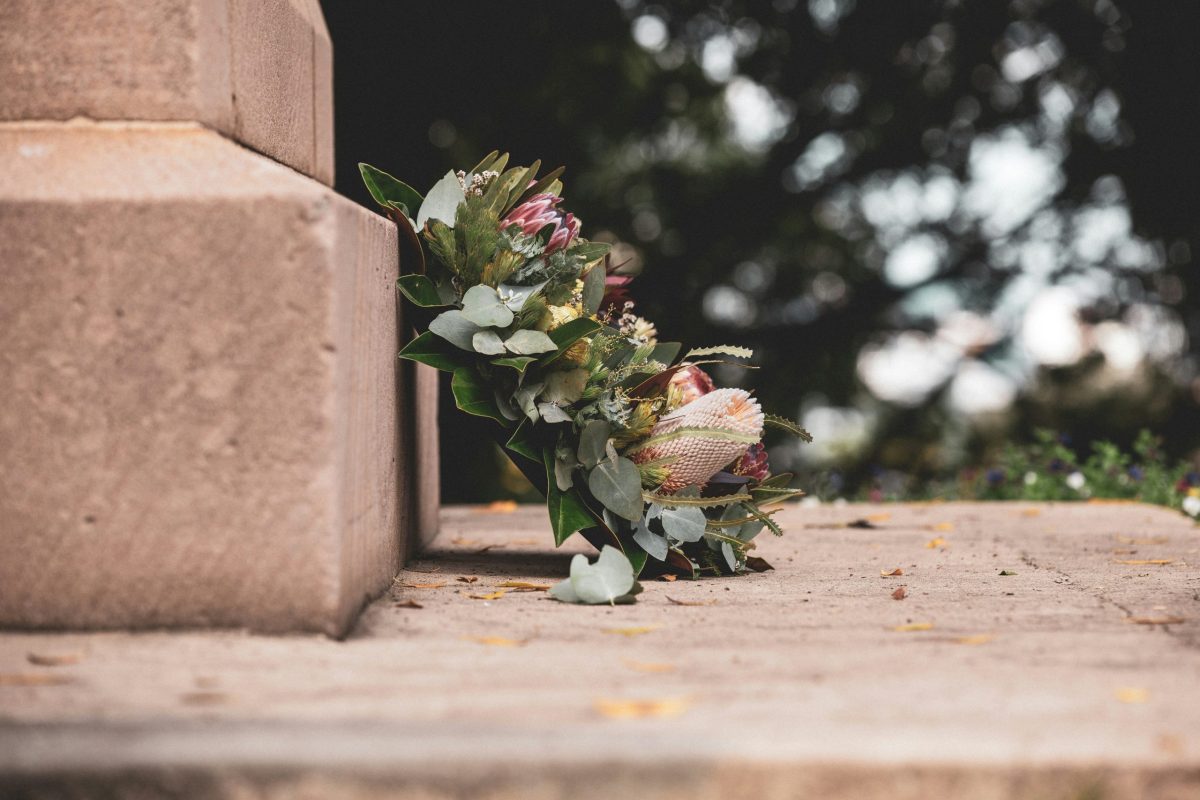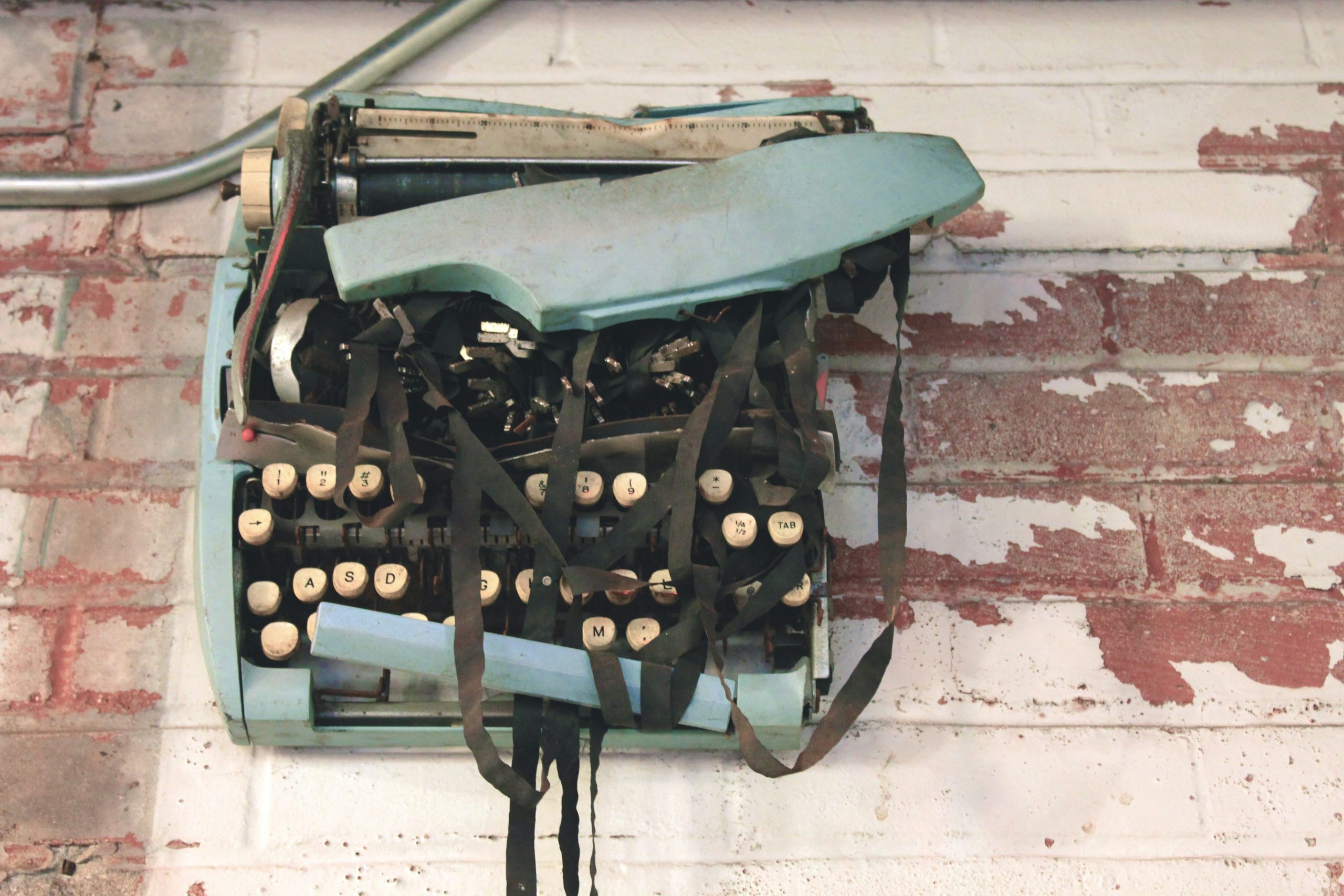Books & Culture
Chinese Cooking Helps Me Connect With My Mother—And Helps Me Prepare to Lose Her
Michelle Zauner’s memoir "Crying in H Mart" showed me how bonding over food could let me cope with anticipatory grief

“If I give you all of my recipes, you won’t have any reason to come home,” my mother used to joke.
It was a self-deprecating observation with a grain of truth. Food is home is family. But it took on a new meaning once my mother was diagnosed with cancer.
Michelle Zauner’s memoir, Crying in H Mart, recounts the abrupt and painful loss of her mother to cancer. Zauner, who also performs indie music under the name Japanese Breakfast, explores not only her grief, but her Korean American identity and how she reconnected with her roots through food. I read the book with a box of tissues by my side. For the first time, I fully connected the anticipatory grief I’d been hauling around with me—grief not only for my mother, but for the prospective loss of my connection to my Chinese culture.
The words that I could not bring myself to admit bubbled to the surface: I have been preparing for my mother’s death.
The words that I could not bring myself to admit bubbled to the surface: I have been preparing for my mother’s death. I do not want her to leave me without preserving what I can. Even though I know it is an impossible task, I am trying to protect myself against regret.
In October 2018, my mother was diagnosed with ductal carcinoma in situ (DCIS). I tried to mirror my parents’ calm demeanors as they broke the news to my sister and me over a laggy FaceTime video chat. They asked us to kindly hold our questions until the end, as if it was some conference call. They talked through the treatment options methodically, my mom flipping through a gigantic white binder they’d already started containing her medical records and test results.
In the grand scheme of things, DCIS—which is essentially stage 0 breast cancer—was the best possible outcome. It was caught in her routine mammogram and since it was localized, removing it via surgery had a high chance of success.
That FaceTime was a tactical call, one focused on immediate crisis management, so I didn’t cry. I could see how much preparation had gone into the agenda, and the desire to reassure us flickered across my dad’s face. But after, I dialed my partner and sobbed until all I could muster up were watery hiccups.
The hospital ended up having to push my mom’s surgery from before Christmas to after the new year. In the pre-operative check-ups, she was diagnosed with a rare blood cancer called polycythemia vera. Her overactive bone marrow made too many red blood cells, making her blood too thick and therefore too prone to clotting, especially during surgery. They had to do several phlebotomies in order to get her hematocrit—the percentage of red blood cells that make up the total blood volume—into a safe range.
I went with her once and marveled at how she barely winced as a nurse inserted a 16-gauge needle into her arm, roughly the same size of a pump used to blow up a soccer ball. They typically withdrew about half a wine bottle’s worth of blood, the bag sitting at our feet slowly filling up over the course of fifteen to 30 minutes like a dark red Capri-Sun. My mom joked that she could have a symbiotic relationship with a vampire.
Polycythemia vera is terminal, but the outlook for patients can be as long as 20 years if caught early and controlled with specific treatments. It felt like just when we had the tumor under control, we were now staring down the long barrel of an incurable disease. It has felt difficult for me to let these sit side by side in my head—“terminal” and “20 years.” Not immediate, but no longer the open-ended kind of life I had envisioned for her.
The few times I shared the news with friends, I felt bad about doing so because it wasn’t conventional grief.
I would be waiting on the subway platform, catching sight of a billboard that said Have you called your mother today? and I’d remember my mom had cancer. I went to work and tried my best to write code but suddenly publishing AMP articles seemed so dumb when my mom had cancer. When I caught up with people and they asked me how I was, I forced a smile and didn’t mention I was randomly bursting into tears every day because my mom had cancer. The few times I shared the news with friends, I felt bad about doing so because it wasn’t conventional grief. All I knew was that it was the refrain that haunted every moment.
But I didn’t know how to make space for it. I didn’t even know what to call it. I’d convince myself it wasn’t a big deal because she wasn’t actively dying. She had a treatment plan in place—regular phlebotomies and frequent blood work—and the outlook was good. Though 20 years wasn’t enough in my head, I knew we were fortunate. I felt trapped in this in-between space. Time, but not enough. Never enough.
It would take me until 2020 to learn the term “anticipatory grief” at a time when the whole world was thrown into this similar destabilizing state. It is the loss of safety, the feeling of uncertainty, and the mourning of lost futures. Because of the unknowability of what lies ahead, you start to conjure the worst outcomes.
Whether I realized it or not, these last few years I’ve been preparing for the worst. The way I’m attempting this is, like Michelle Zauner, to connect with my mother through food.
Crying in H Mart is also a food memoir filled with lovingly rendered images of piping hot jjigaes in earthenware cauldrons at grocery store food courts, refreshingly icy mul naengmyeon in a fancy restaurant in Seoul, and an assortment of homemade kimchi sitting in mason jars at various stages of fermentation in a small Brooklyn kitchen. As a second generation Asian American, I recognized myself in her descriptions of her adolescence and the sensation that one could “never be of both worlds.” Whether I’m in America or China, my belonging feels like something to prove. I related strongly to these descriptions of meals that were, above all, a means of easy, joyful cultural connection.
Although Zauner’s mother never taught her to cook, she nevertheless instilled a “Korean appetite,” which meant “reverence for good food and a predisposition to emotional eating.” My mother thought of Chinese food in a similar way. I initially shrugged off her attempts in high school to teach me how to cook, much preferring to scroll through Tumblr. Like Zauner, I always wondered why my white friends’ moms cooed over them when they got hurt, while my mother berated me as if “I had maliciously damaged her property.” Through my teenage years and then as an adult, her high expectations for me to take care of myself were often tested by food. “Emotional eating” took on a new meaning when I developed an eating disorder in college. At one point, my mom threatened to pull me out of school if I didn’t seek treatment. In her eyes, a successful treatment was synonymous with weight loss.
Whenever she tried to talk to me about therapy, I snapped at her because her judgment and disappointment was part of what made recovery both so important and so challenging. Our conversations would devolve into screaming matches because we were unable to find a common language to discuss this aspect of mental health. But after college, years of therapy, and repeated attempts at dialogue, I would come back to cooking, texting my mom from the grocery store and FaceTiming her over the stove. Food became a strong point of connection, but the tension between wanting to please my mother and to be immune to her judgment, good or bad, would linger.
What also struck me about the book was Zauner’s discussion of preservation. When talking about a potential trip to Jeju with her mother after her diagnosis, she suggests making a documentary of their time there. It is her “instinct to document,” but when she realizes she’s co-opting “something so vulnerable and personal and tragic for a creative artifact,” she feels ashamed. Yet later she calls her mother her “champion” and “archive.” There is the sobering acknowledgment that “knowledge left unrecorded died with her.” She begins learning to cook Korean food after her mother’s passing as a response to “the preservation of a culture that once felt so ingrained in me but now felt threatened.”
This tension around preservation is one I’ve also struggled with. I feel the impulse to document everything, but it clashes with the reflex of narrativizing my life through social media and how vulgar that can feel. Even though I’m not necessarily posting any of these pictures or videos, I worry that the act itself distances me from the experience, that I am so obsessed with documenting that I’m no longer present in the moment. But seeing Zauner wrestle with these similar messy feelings of shame helped me. Preservation can be the literal act of documentation. But it’s also asking questions and listening to stories. It’s sitting with a loved one’s words and letting them breathe.
Preservation can be the literal act of documentation. But it’s also asking questions and listening to stories.
In my camera roll, my mother teaches me to cut parchment paper like a snowflake to use in the bottom of a steamer. When narrating her technique for making egg rolls, her advice is to simply “fold it like a baby.” There’s the growth of our garlic shoots which we eat with scrambled eggs. I watch her chop hefty chunks of garlic, ginger, and green onions to be thrown into a wok with lobster. I note how many times she brushes baked chicken legs with a buttery soy honey glaze until they’re gleaming, reminding me of all the times we entertained guests with this dish as the centerpiece.
I stand by my mother’s shoulder as she cooks, taking notes on my phone while asking her for measurements even though just like Zauner’s mom, mine will also “disavow measurements and supply only cryptic instructions.”
Even though still she says that I have to keep tasting until the dish is ambiguously “right,” where she once refused even to provide estimations, she now obliges. I wonder if she knows why I’m doing these things, if it’s why she is willing to estimate teaspoons and convert portion sizes for me.
In several essays, Zauner learns recipes for various Korean dishes with the help of Korean cooking YouTube star Maangchi. She props up her laptop and follows the instructions for different types of comfort food. She makes steaming doenjang jjigae for her relatives after her mother’s funeral as a way of thanking them for their support. She makes jatjuk and finds that the plain porridge is the first thing to make her feel truly full. Each dish conjures the memory of her mother and nourishes her.
Over the last few years, I’ve been slowly trying my hand at recreating my own comfort food with my mom’s guidance and links to CCTV cooking segments. I worked my way up from relatively easy ones, like 鸡柳炒杏鲍菇 (chicken tenderloin with king trumpet mushrooms) and 醋溜白菜 (stir-fried napa cabbage in hot and sour vinegar) to more elaborate ones like 红烧肉 (red-braised pork). But by far the most intimidating thing was making dumplings from scratch.
Last Lunar New Year, I took the subway to Chinatown and filled an empty backpack with ingredients from Hong Kong Supermarket. I referred to the recipe my mom had given me over Christmas for the dumpling skins, pork and cabbage filling, and sauce. My finger hovered over my phone screen as I replayed the videos of my mother angling her cleaver through napa cabbage leaves to mince them and demonstrating how to mix the minced pork with a gloved hand moving clockwise. She narrated each step in a seamless blend of English and Chinese.
I used the dumpling seasoning she packed in my suitcase that she’d ordered from Yamibuy, waiting for the savory smell to emerge like she said it would. I frequently tasted the 蒜汁 (garlic dipping sauce), adjusting the levels of soy sauce, sesame oil, and zhenjiang vinegar until it matched my memory. I rolled out each dumpling wrapper, trying to apply pressure so that it would leave a bump in the middle to better support the filling.
Crying in H Mart made me realize how important it was to cook, to root myself in some form of action. Finally, here was something tangible I could do that wasn’t wallowing or weeping.
“像一个草帽,” my mother would say. “Like a little straw hat.”
Two of my friends came over and together, we folded dumplings, lining them up in neat rows on parchment paper to prevent sticking. There weren’t enough surfaces in my small apartment for all the trays. Even though the dough I’d made was too wet, the dumplings survived the boiling water without falling apart. (Luckily I’d also bought backup pre-made dumpling skins.) It felt strange assuming the roles that had previously only been reserved for my mother.
We sat down to eat the dumplings and miyeok guk, a Korean seaweed soup which my friend had prepared. The taste wasn’t exactly like home, but its familiarity filled me with a sense of pride and relief. This giant celebratory meal that always held a huge place in my mind now felt accessible in a new way. It was a taste of home and family, but was also a way of creating my own rituals and memories too.
Crying in H Mart made me realize how important it was to cook, to root myself in some form of action. Finally, here was something tangible I could do that wasn’t wallowing or weeping. Building muscle memory and a reference point for different tastes were ways I could hold onto my mom and by extension, my Chinese culture. In this limbo of anticipatory grief, there could also be joy.
After 2018, I started flying back to Atlanta more frequently, even if it was just for a weekend. My travel outfit was always a pair of Adidas sweatpants and a Japanese Breakfast sweater I got at her show at Brooklyn Steel in 2017. It has an illustration of a woman in a chair and around her are the lyrics: “you should try to do as little harm as you can to the woman that loves you.”
Every time I traveled back through airport security, I held my breath as my mom’s food was hand-checked by TSA agents. She always made sure I returned to New York with enough food to tide me over for a few days: a whole homemade beef shank, densely packed dumplings in tupperware, and red-braised pork that she sandwiched between layers of white rice so that the liquid would get soaked up and couldn’t be confiscated by security. Sometimes I also had salted duck eggs and packets of 榨菜 (pickled mustard root) in my suitcase, wedged between my rolled-up sweaters.
On one of these flights, a TSA agent gestured at my sweater as I stepped out of the body scanner, “Why does she have so many hands?”
I mumbled something about it being a band shirt and collected my things so I didn’t hold up the line. When I took a closer look, I realized that there were indeed four arms that I hadn’t ever noticed, but two of them were coming out of the chair the woman was sitting on. One enveloped the woman’s waist and another gripped her shoulder, as if comforting her.
I thought about how easy it was to take my mom for granted, that her arms would always be there to fall into.
The Japanese Breakfast song from which those lyrics come is about a toxic relationship, but when I looked at the sweater in isolation, I imagined the ghostly chair was the woman’s mother. I thought about how easy it was to take my mom for granted, that her arms would always be there to fall into. It reminded me that even though her perfectionist tendencies and high expectations could be grating, I couldn’t react like a pissy teenager anymore. I had to grow up and act like it. I blew up at my mom the easiest because we were so similar. I wanted to have the patience and understanding of an adult, not a child.
An obvious refrain around coping with anticipatory grief is to cherish the time you still have with people. But the Japanese Breakfast sweater would become my more realistic, more pitiful mantra: “you should try to do as little harm as you can to the woman that loves you.”
When the pandemic hit, I went back to Atlanta to be with my family. Living under one roof again as adults brought a lot of friction and frequent arguments. But every fight was now also laced with guilt.
One evening my mother and I got into a disagreement about scheduling. I encouraged her to get more consistent sleep, since she has a habit of revenge bedtime procrastination that makes her stay up until 6 am, but that only made her defensive. I came down to the kitchen and we regarded each other wearily, wondering if we would launch back into it or just continue to ignore each other. My mother had the Costco-sized egg container out on the counter.
“What are you doing?” I asked.
“Making 咸鸡蛋.”
Usually we bought preserved duck eggs that were vacuum-sealed from Great Wall Supermarket in Duluth, but it was always a treat when she made salted eggs at home. She began explaining each step, boiling water and salting it until you can’t stand the taste. We didn’t have enough regular salt, so we dipped into my sister’s fancy pink Himalayan salt. All my mother’s years of hoarding glass jars paid off and I stood on a stool to bring a selection of them out of the cupboards.
“Keep wide-mouthed jars,” she advised. Barilla jars? A little narrow but decent. Tostitos salsa jars? Shallow but a good width.
Once we filled each jar to the brim with salt water, we giggled at the eerie sight they made arranged on our kitchen counter. We joked that it looked like pink lemonade. If we were subtle about it, we thought we could prank my dad into drinking some. Unfortunately, we couldn’t contain ourselves and both my dad and sister quickly backed out of the kitchen at our conspiratorial grins.
We historically had a tendency to blow up, cool off, and then make some kind of wordless peace offering like a plate of sliced fruit or a cup of tea. I felt like we had reset once again over the salted eggs, but I wanted this time to be different. I didn’t want to take my mother’s forgiveness for granted.
The only way forward was to feel as much as we needed to, talking about it candidly over salted eggs.
As we waited for the brine to cool, I told her I was sorry. My mother paused as she wiped the counter, then waved her hand and brushed it off. I repeated my words and explained why I’d gotten so worked up over her sleep schedule. It wasn’t that her weird hours bothered me. It was that I’d read so many things about the importance of sleep in terms of health and building one’s immune system. I wanted my mother to have all the protection she could get.
Her face softened as I blurted this all out. Beyond asking for her hematocrit numbers and checking in on her doctor’s appointments, we hadn’t talked much about her illness. She pulled me into a hug and reassured me, “It’s okay. I’ll be okay.”
While reading Crying in H Mart, I tripped over the sentences of Zauner’s mother saying, “Gwaenchanh-a.” It’s okay. She wrote that her mother was “the only person in the world who could tell me that things would all work out somehow.” As my mom held me, I knew exactly what she meant.
I helped lug the jars down to the basement where they would sit for at least a month. The glass was still lukewarm from the brine. I let out a breath I hadn’t realized I’d been holding.
As difficult as it was to acknowledge the specter of death that loomed over us, it felt good to share it with my mother. Remaining silent and denying my own feelings wasn’t minimizing the harm I feared inflicting on her. The only way forward was to feel as much as we needed to, talking about it candidly over salted eggs. Perhaps that, too, could be a type of preservation.
That has been the difficult part about anticipatory grief. You spend so much of your time bracing yourself for death that you forget that in the meantime, you have to figure out how to live. Reading Crying in H Mart was an affirmation that love is “an instinct, a response roused by unplanned moments and small gestures, an inconvenience in someone else’s favor.” Preservation doesn’t mean staying stagnant, but creating new memories.
You spend so much of your time bracing yourself for death that you forget that in the meantime, you have to figure out how to live.
The book helped me come to terms with the cultural dimension of loss and the conflicting feelings that come with trying to preserve that culture. Perhaps it means resisting the urge to lace every moment with meaning while also trying to be more actively appreciative of them. To see this anticipatory grief as a guiding force, not a guilting one.
“The memories I had stored, I could not let fester,” Zauner writes. “Could not let trauma infiltrate and spread, to spoil and render them useless. They were moments to be tended. The culture we shared was active, effervescent in my gut and in my genes, and I had to seize it, foster it so it did not die in me. So that I could pass it on someday.”
I hold that passage with me now as I continue to cook with my mom or on my own. This Lunar New Year was the first one I’ve spent at home in eight years. My sister is now adept at filling and folding dumplings while I’ve continued practicing rolling out the wrappers. My movements are no longer clumsy and I enjoy losing myself in the rhythmic rolling motions.
“出徒了!” my mother complimented us. You’re no longer apprentices!
That we could now make dumplings ourselves was a bittersweet recognition.
To a point, I know I will never feel prepared for whatever will come of my mother’s illness. But I now embrace Chinese cooking as the best way to nurture my relationship with her. The culture we share is active and I will continue tending each moment we have together.








